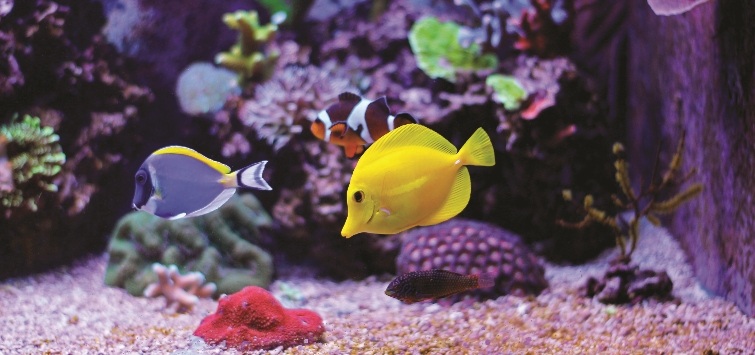Saltwater aquariums teeming with color and life can be stunning additions to any home. These marine ecosystems need dedication and understanding to thrive.
Water changes are an integral element of a healthy saltwater aquarium. They remove waste and replenish minerals such as alkalinity carbonate, calcium and magnesium.
Sterilize any water that you take in from outside. Also, you’ll need to monitor important parameters like ammonia, pH, and nitrite/nitrate each week.
How to set up a Saltwater Aquarium
Saltwater aquariums are a great option to maintain marine life in a secure and serene environment. They can also be incredibly exciting. But, it’s more expensive and time-consuming than freshwater tanks, and requires more work to maintain. Before you get started with an aquarium with saltwater, be sure that you’re willing to commit to the hobby.
Reverse Osmosis System – Make sure you have enough capacity to generate huge quantities of water for the aquarium. A minimum of 75 gallons per day is adequate. A TDS Meter is required to check the quality of water.
Live rock is essential. This can transform the chan be ca canh bang go aquarium from a basic glass box to an ecosystem, and also create habitats for corals. But, the only thing that all live rock species have in common is the fact that it has hitchhikers. (Stowaways). These are the animals that can take over your entire aquarium in one strike.
Equipment – Get a sump set up to accommodate your heater, powerheads, and the skimmer. It’s helpful to put several holes on the stand to allow you to use probes that are connected to your aquarium control. A journal is also useful for recording your water changes, tests as well as other pertinent details.
Different types of saltwater aquariums
Saltwater aquariums can be just as beautiful and fascinating as freshwater ones, however they’re more difficult to maintain and begin. Live rock is essential. It is a habitat for corals, as well as habitat for a variety of marine fishes and other invertebrates that burrow or dig into it. They include starfishes, wrasses/gobies/mandarin. It also carries hitchhikers, or stowaways which can cause damage to your reef in one quick strike.

Saltwater Aquarium Maintenance Tips
Aquariums with saltwater require a regular cleaning. A healthy coral tank calls for regular maintenance. The weekly and daily tasks include cleaning the protein skimmer’s cup, the filter sock or block for filtering, cleaning the tank’s glass and stand, testing water parameters, feeding the fish, and cleaning algae splatters from the equipment and glass. Tunze Care Panes is an aquarium-safe glass cleaner can make the task easier. It will also reduce the annoying smudges on the glass of saltwater tanks.
A partial water change is recommended every week to eliminate waste materials and to maintain a proper salinity. This is crucial for tanks that are heavily populated or tanks with huge specimens that excrete a lot of organic matter.
Installing an RO/DI system at home is the ideal investment you can make to assist in the execution of your regular water changes. You will be able to save money by not having to go to the fish store. Be sure to mix the freshwater before mixing it with salt from the marine before aerating it, and then warming it up to a temperature that is suitable for your tank before you perform your water change so that you experience minimal disruption.
Reef Tank Setup
An aquarium for marine life is an amazing and unique addition to any home. A marine aquarium can be an excellent tool for education for adults and children alike to learn about the ocean’s ecosystems and conservation efforts. A saltwater aquarium is more expensive to maintain compared to a freshwater tank. The initial expense of equipment, special lighting, and the need to maintain it for a healthy coral environment are the primary reasons.
It is essential to choose the appropriate equipment when installing your reef tank. Also, you must ensure that the tank fits into the space it is located. If you can, try to stay clear of windows that let the aquarium to receive direct sunlight. Some corals can be damaged by the light, and they could even be suffocated or bleached.
The next thing to do is to choose the best filtration system for your needs. It is highly recommended that you choose a FOWLR (Freshwater Aquarium with Live Rock) installed to ensure your reef has the highest quality biological filters. Live rock also is the home of a flourishing community of bacteria as well as other animals, which will keep your water clean and healthy.
Marine Aquarium Equipment
Thermometers are important instruments for hobbyists of all kinds, but particularly in saltwater aquariums where the temperature is crucial to a successful and thriving tank. Thermometers will ensure that the heater maintains the proper temperature. A basic thermometer is useful in monitoring the temperature of the water, defrosting out frozen food, as well as operating the filtering system.
Biological filtration is an integral element of any reef aquarium set-up. Whether you use live rock from a variety of tropical zones or artificial Real-Reef-Rock which can provide micro algae for the fish to feed on, biological filtration is essential for any reef tank. It is typically complemented with mechanical filters or protein skimmers that remove detritus before it can be broken down into nitrates and phosphates.
Make sure to do your homework before putting together a saltwater tank. It’s easy to get overwhelmed by all the different methods and strategies which are touted as the best method of setting up a saltwater aquarium. Find one source that has demonstrated success and stick to for a while before gradually expanding your understanding as you gain experience.
